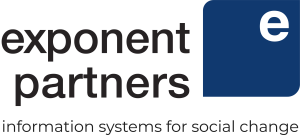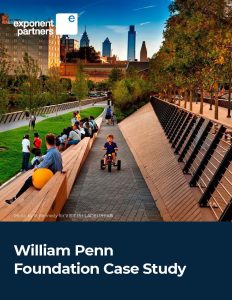Case Study: The William Penn Foundation
Established in 1945, the William Penn Foundation’s mission is to help improve education for low-income children, ensure a sustainable environment, foster creative communities that enhance civic life, and advance philanthropy in the Greater Philadelphia region. Each year, the family foundation reviews over 200 grant applicationss and awards $110 million in grants.
“Our old system required a lot of passing of the baton—one person had to complete their work before another person could do theirs. Now, work can happen simultaneously—financial review, legal review, deliverable review, and more. There is more transparency into what others are doing and how they can support each other.” – Samantha Shain, Database Administrator, William Penn Foundation
Situation
Grant data housed in three separate databases
Spreadsheets that lived on a network drive were used to manage early pipeline entries, whereas MicroEdge GIFTS was used for transactional records. These databases were supplemented by a custom-built solution for workflow and portfolio management. Ongoing maintenance of the custom solution—which struggled to handle cross-programmatic grants—was cost-prohibitive, so when it was announced that GIFTS was being sunsetted, the foundation decided to investigate options for a scalable and stable platform that would streamline grants management.
Multiple bottlenecks negatively impacted productivity
The foundation’s previous solutions required staff to “pass the baton” in order to push a grant through the process. Employees were unable to simultaneously access and work on the same grant, resulting in bottlenecks that impeded progress. This issue was compounded by a lack of transparency caused by emails being housed on individuals’ computers, rather than in a central location where key stakeholders could quickly access important correspondence and documents.
Time-consuming manual work required to manage the grants pipeline
Grants pipeline management was cumbersome and labor-intensive. In order to forecast grant payments, senior staff had to update a spreadsheet daily, introducing the possibility of human error. Consolidation between the grants pipeline and details about grants already awarded required an intensive de-duping effort that was only feasible to complete once per month, due to the time commitment involved.
Limited visibility into the grants management lifecycle, post-approval
Grantees would submit their results, milestones, and activities (RMAs) in a Word document, but staff didn’t have easy access to this information for tracking purposes. As a result, version control was a problem, as was visibility into progress on specific aspects of individual grants.
“We worked closely with Exponent Partners to make important decisions that made it possible for staff to use the system as-is today, but that will also enable us to develop the platform in the years ahead, ensuring that it continues to meet our evolving needs.” – Samantha Shain, Database Administrator, William Penn Foundation
Solution
William Penn Foundation was committed to finding an extensible grants management solution that could be customized to meet the diverse requirements of the organization’s key stakeholders. Having a cloud-based solution was important too as it would give staff timely, remote access to data via a phone, mobile device, or computer.
Salesforce and foundationConnect quickly surfaced as the frontrunners during the evaluation process as the integrated solutions met the organization’s short- and long-term needs and requirements.
In November 2017, William Penn Foundation deployed Salesforce and foundationConnect, marking a milestone in the transformation of the organization’s technology infrastructure and grants management. The organization implemented foundationConnect’s budget and program modules, payment schedules, reporting, and Grantee Portal. This standard, out-of-the-box functionality was enhanced with customized features that were implemented by Exponent Partners.
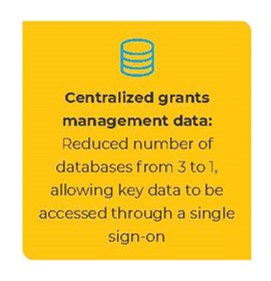
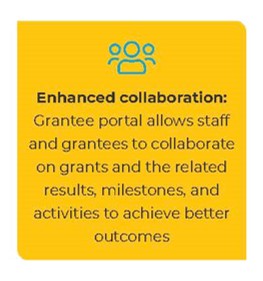
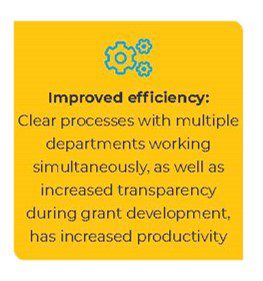
The new system, known internally as the “Grants Unified System” and fondly referred to as “Gus”, also includes third-party apps. “Our system is now considered best-in-class by other peer foundations who are striving to streamline and optimize their grants management,” explained Samantha.

Results
Increased automation has eliminated major bottlenecks and freed up resources
Program Officers receive notifications for all incoming inquiries and applications, removing the Grants Management team as the information gatekeeper. This streamlined process ensures that grants reach the right people in a timely manner. Additionally, thanks to the payment approval wizard that Exponent created, Finance staff now automatically receive payment approvals and payment projections are readily available through scheduled monthly reports. With less time being spent on mundane tasks, such as consolidation of information from various spreadsheets or cross-referencing paper and electronic files, staff have time to pursue new or more challenging projects.
Enhanced visibility into real-time information and improved data integrity
Staff can now quickly and easily access real-time information on active grants, due dates, and budget. “Team members are no longer storing data on our network drive and emailing spreadsheets around,” said Samantha. “They can see a representation of all of the payments in the system, and can also modify their own pipeline record, so that it is reflected in the budget at the appropriate time.” This decentralized approach to budget access and updates has increased accountability. Also, with rules in place, data integrity issues, such as mistakes or missing information, are quickly identified and can be addressed immediately.
Increased collaboration between the foundation and grantees with the Grantee Portal
Grantees are now required to create their RMAs in a custom Visualforce page that Exponent Partners built as part of the Grantee Portal. According to Samantha, “Our grant making is now more collaborative with our grantees. Before, it was inputs and outputs, whereas now we have a structured feedback loop that should eventually lead to better grants.” The new method for tracking RMAs in both interim and final reports has given Program Officers more visibility into the progress of individual grantees. Emails between grants staff and grantees are also housed in the Grantee Portal thanks to seamless integration with Outlook. This centralized approach to tracking correspondence, activities, and key documents has enhanced transparency and knowledge sharing, while ensuring that grantees aren’t bombarded with similar requests from foundation staff.
Improved ability to handle cross-programmatic grants
foundationsConnect’s architecture allows the organization to keep a single grant record even when a grant is tied to two different budgets. “We are now able to easily handle cross-programmatic grants in a way that accurately reflects the related budgetary impact in different areas,” explained Samantha. Native foundationConnect functionality was enhanced with a Visualforce page, built by Exponent Partners, to provide more granular details about time spent managing project budgets.
More sophisticated reporting capabilities
Detailed dashboards tailored to end users’ unique needs make it easy for staff to know where they need to take action. Conga reporting enables staff to report on various grant details, including RMAs. The foundation also uses Conga to create a massive spreadsheet for tracking payments—an effort that used to be manual. Director Discretionary and Matching Gifts are also tracked and reported on thanks to a separate, but integrated portal created by Exponent Partners.
Extensible platform that supports the organization’s broader vision
William Penn Foundation will continue to work with Exponent Partners to complete a Communications CRM project. This follow-on effort will give the foundation an enhanced ability to build out contact attributes in a more sophisticated way. This valuable data can then be used for granular segmentation and targeted outreach to people from the general public who might be interested in engaging with William Penn Foundation.
Download a printer-friendly PDF version of this client success story.
Photo credits: Race Street Pier photograph by R. Kennedy for VISIT PHILADELPHIA ©; Youth rowing in a canoe photograph by Hannah Morales for UrbanPromise.
